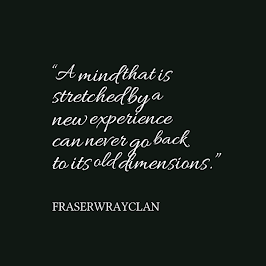The first part of the Being and Flowing Sequence is a basic relaxation session where some (or several) of the techniques of guided imagery or meditation can be used. In fact, for this type of relaxation, you can use new techniques or techniques that are familiar to you and that have worked for you in the past. If you do the sequence regularly, you can switch between techniques if you like.
One caveat: We find that general medical/therapy techniques, specifically those that are not associated with a particular spiritual path, work best for the Being and Flowing meditation in this context. (We link to some general relaxation techniques from the University of Maryland Medical Center, below).
Being and Flowing First Step: Basic Relaxation Session
One: Position
If you are outdoors, find a quiet, safe place in a garden, park, beach or woods. Remember, safety comes first. If you are indoors, find a place where you won’t be disturbed. Sit on a floor cushion or in a chair with your feet on the floor, or lie down in a comfortable position. Whatever position you choose, try to remember, you might choose not to move or shift while being and flowing, so make sure it’s really comfortable.
Two: Watch Your Thoughts
Once you are comfortable, the first thing to keep in mind: Don’t worry about your thoughts. Allow them to come and go as they wish. Give them their freedom to come and go as they like. Don’t try to control them. Just observe them.
Three: Watch Your Breath
Don’t try to control your breathing. Just observe your breath. If you are familiar with breathing techniques and want to try them, you could, but to forge a new path it’s sometimes good to let go and experience non-familiar meditative pathways.
Four: No Goal
If you feel stressed or anxious, remember: there is no goal here. Just passively watch where your thoughts and breath take you. If after a few tries anxiety (or boredom, which can be a symptom of anxiety during meditation) feels overpowering, take a break.
Five: Far Away
At some point, your thoughts may seem to “melt away”. They may feel far away; you know they’re there, but they don’t seem to touch you, or you don’t really touch them. There is a gulf between you and your thoughts, including your less-than-helpful ones. When they are so far away, their ability to control you is greatly diminished.
Help!
If you need help we recommend you try music. We really like (and recommend) Dr. Harry Henshaw’s relaxation music. (Last year, we interviewed him, here.)
Dr. Henshaw’s audio tracks of free-floating music are really de-stressing. We can best describe them as providing a musical pathway on which your thoughts can flow. His music doesn’t restrain or confine your thoughts as much as gently supports them. We really liked the ones on these pages; so far, we’ve sampled the uplifting music of Clarity, the gentle vibrato of Cosmic Reflection, the sweet tones of Equilibrium and the progressions of Inner Peace.*
If you want more concrete help the techniques of progressive relaxation (and toe tensing) can be very helpful. The University of Maryland Medical Center has clearly outlined them. They recommend the techniques for sleep disorders, but they are also helpful for tension and anxiety. One quibble: they don’t mention that slightly tensing each area of the body (not just the toes) before you relax that part, can be even a more powerful path to relaxation.
We’ve made our own relaxation recordings at home. We record our soft, slow voices giving a step-by-step progressive relaxation session. You might enjoy making your own recordings, too.
Being and Flowing Second Step: Journal
If you are in therapy, or even if you’re not, it’s a good idea to do a Being and Flowing journal. Some people like to share this with their therapist, others don’t. It’s up to you.
You might consider doing an audio or video recording if you don’t like to write. Writing or otherwise recording your general experience with your relaxation session, is a good starting point. Then, if you like, continue to write or otherwise comment on your experience of your thinking process. What were your thoughts? Were you able to let them drift by? Did any thoughts “stick” more than others? Did new thoughts, thoughts you never “thought” before, pop up?
Also, you might explore the self that observed the thoughts. And so on. If you don’t like to write and don’t want to do an audio or video recording, you can try illustrating your experience by drawing, painting, collage (found objects, fabric, and so on), photography, etc.
Once you have a sense of Being and Flowing, you’ll might find yourself being able to step back, even in a non-relaxing session, from your thoughts that are not beneficial. You might find it easier to dispassionately examine your thoughts (and beliefs, which are a type of thought often mingled with emotion) and see if they are really beneficial to you.
In fact, a very important, even central, part of therapy is examining thoughts and beliefs that hamper or are openly damaging to: your personal growth, relationships, mental health, and physical health. Therapy, in part, teaches you how to “rethink” things, even changing your most closely held beliefs, if they don’t serve your growth. Healing your thoughts is central to healing your life.






















































